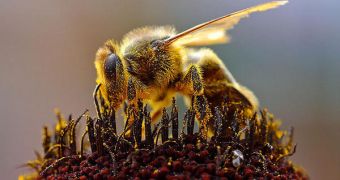Bees are generally feared for their stings, which are known to be very painful. Most animals, including humans, know this, and generally keep clear of the insects. Bees are more than willing to lay down their own lives for the sake of their queen, and there is little other species can do about this, except for Japanese hornets. But some bee species have taken another route to protecting their hives. Rather than stinging an intruder, they prefer mummifying it, burying it alive in resin, NewScientist reports. The practice is relatively common in species living in the wild.
There is a variety of bees, known as stingless bees, that prefers not killing the invading beetles using needles. Rather, stingless bees entomb the assailants in a large amount of resin. This does little for the beetle's eternal life. On the contrary, it tends to suffocate the insect to death, by depriving it of air, and completely blocking its motions. “They're stopped in their tracks and they dehydrate and shrivel up like a mummy,” entomologist Mark Greco explains. The expert works at the Bern-based Swiss Bee Research Center, and discovered the mummifying practice in a species of Australian stingless bees called Trigona carbonaria.
Greco discovered that the bees tended to take about ten minutes to coat their attackers with a powerful and sticky mix of resin, mud and wax. In order to make these discoveries, the Swiss team planted beetles at the entrance of lab bee hives, and then used CT scans to determine how the mummification process took place. They note that, at first, the guard bees attempted to fend off the predators, but that the beetles' thick armor made them immune to such attacks. When this method failed, more bees mobilized and started pouring the sticky mix on the assailants. The only loophole in the bees' defenses that Greco could find was heat. During days when temperatures exceed 40 degrees Celsius, the bees are distressed and their mummifying substance does not catch in very well.
The expert says that this method of defense may have stemmed from the fact that stingless bees tend to glue down everything that is not secure. They use the same mix to piece together loose pieces of their hives and honeycombs, and Greco believes that mummification is just an adaptation of the same habit. In most cases, he adds, the beetles do not manage to get very far from the beehive entrance before they are permanently disabled and immobilized. “Their instinct is to glue something down if it's not secure,” the expert says. Details of the work appear in the latest issue of the journal Naturwissenschaften.

 14 DAY TRIAL //
14 DAY TRIAL //